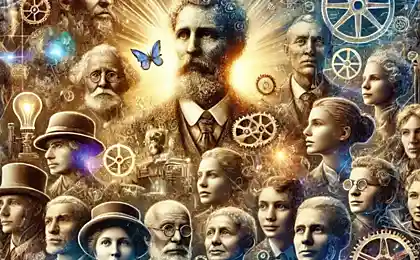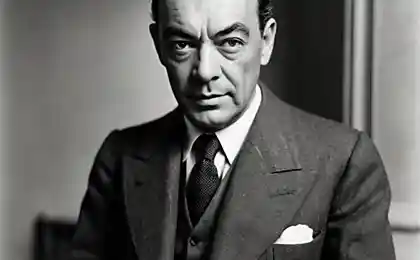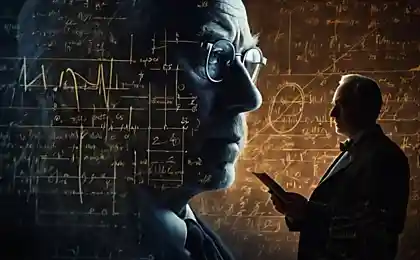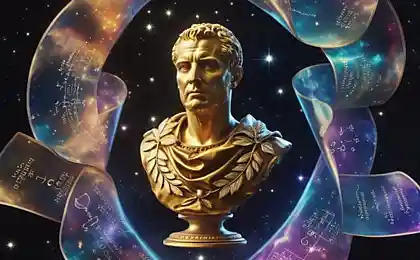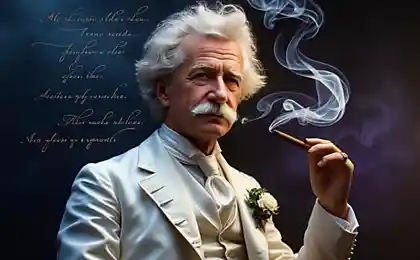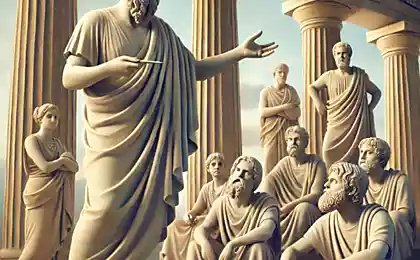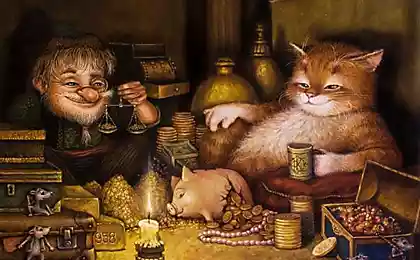487
They know how the geniuses?
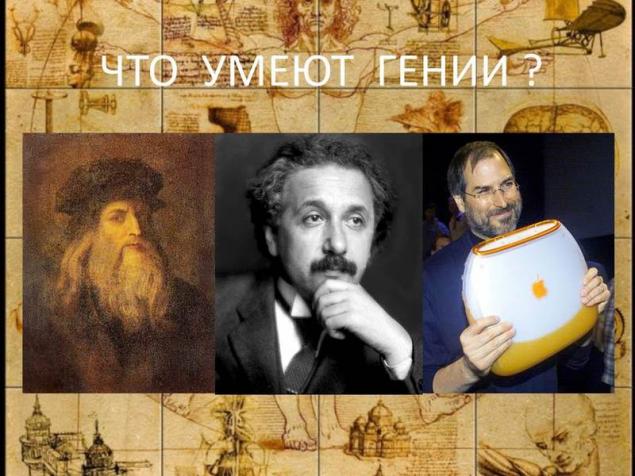
1. Well-developed ability to visualize.Vision was the main "navigation" tools of geniuses. "The thinking thinks the forms in images" (Aristotle). Einstein defined his ability to create images and visual design as a source of productive thinking. The visual perception channel is the fastest, synthetic and succinct, it passes through about 80% of processed information.
2. Creating and using multiple links between senses (synesthesia).Regardless of whether lying the ability to render in the center of their genius and great personalities tend to use all other senses and form synesthetic relationships between sensations. This ability allows maximum holistically perceive and transform the images of our consciousness. It returns us to the origins of perception, peculiar to children, to the origins of the formation of concepts. At the same time the result of our work is pre - "tested" in conformity with reality.
3. The use of multiple perspectives.An important characteristic of genius is its ability to use several different perspectives when dealing with specific object or process. Genius is often born from discovering a new perspective, which to him had not yet used. Theory of relativity — essentially a description of the interaction of different perspectives. Searching for details that do not fit the usual picture of the world and finding a new perspective — a common strategy of geniuses.
4. Highly developed ability to constantly switch from one position of perception to another.In addition to the ability to accept different points of view, geniuses have the ability to identify with different perceptual positions: first (I, my view, my feelings), the second (another, the object of research, his point of view and feelings) and the third (the position of an outside observer of the interaction of our "I" and the object). They go beyond their beliefs and assumptions, identificeret itself with an object, and then review the situation impartially and estimated. The ability of Disney to identify with the heroes of cartoons (he even voiced some of them), as well as with their audience, visitors of parks is a good demonstration of this skill.
5. The ability to easily move from one level of thinking to another and to use "pieces of information" of different sizes.It is the ability to quickly transition from a broad vision to a more narrow components and specific actions necessary to recreate the larger picture. Geniuses are able to work with little things ("little things create in perfection, and perfection is no trifle" of Michelangelo)* and simultaneously did not sink in details; they could see the whole picture, without losing sight of its smallest components, had a unique ability to find the balance between big and small. The unified field theory Einstein was aimed at establishing linkages between all physical phenomena in the Universe — from the cosmos to the atom.
6. Feedback between abstract and concrete.Geniuses are able to move from the abstract models and principles to specific embodiments of these abstractions and back again. They create their works through a constant process of exchange between mental constructs and physical reality (synesthesia used in this sense channels ensures the completeness of the transitions). This forms a persistent and dynamic feedback loop between abstract images and real expression that allows to constantly adjust and improve both. According to Einstein, the only justification for the theory is "a measure of the viewing experience derived from our senses, which we can achieve with its help"
7. The balance of cognitive functions: Dreamer, Realist, Critic.This is the main component of genius. Geniuses not only have a developed ability to dream, but also abilities and skills to turn their dreams in concrete forms and to think critically about their ideas and their incarnations. The ability to think critically is as important to a genius as the ability to dream. The key point is to not give Criticism to suppress dreams. And, of course, separates the ability to produce a creation that embodies these dreams and ideas. If Mozart, Leonardo or Disney just kept my ideas in my head, the world would never have learned about their genius. Leonardo has left us not only the strategy, learning to dream, but also a number of strategies, learning to draw and to assess its performance. Between radovskii "ID", "Ego" and "Super-Ego" has many Parallels with the dreamer, realist and critic. Tesla claimed that the ability to be "thorough" dreamer facilitated the implementation of ideas and inventions.
8. Posing fundamental questions.Geniuses tend to attach greater importance to questions than to answers. A key characteristic of all geniuses is their indomitable curiosity and enthusiasm. Genius asks more direct questions, than looking for the "right" answers. Part of the genius, apparently, is the belief that eventually the right responses and can not be. Geniuses looking for areas where their knowledge is not complete. Their own failures, they are not seen as "cruel fate", but as the area of further search. As one inventor: "Failure is just a different solution than what I'm working on at the moment". Failure — the springboard to a successful solution. Disney on this occasion, he said: "I have to explore and experiment... I was disappointing the limitations of their own imagination." Mozart's music is the result of his constant concern, whether these are the "two notes who love each other."
9. The use of metaphors and analogies.Geniuses are constantly resorted to metaphors and lateral or nonlinear thinking strategies. A metaphor or analogy underlies every brilliant action. The use of metaphors allows us to focus on the most important deep structures of the object are not reducible to verbal description. Einstein widely used metaphorical constructions: flat world two dimensional creatures, beetle, crawling on the ball, etc., Tesla formulated the idea of creating robots to draw analogy with the work of own nervous system. It may seem that the use of metaphor allows the genius to focus our attention on the "General properties" (Aristotle) and more profound basis as the ambient and internal peace, and to avoid the risk of ending up in too much dependence on real content or limitations imposed by reality.
10. Purpose in addition to its own personality (Ffm)All geniuses have in common is that they see their work as originating from something and serving something greater than themselves. In the introduction to his anatomy Leonardo boldly said: "I want to do miracles... even if I have less rest than other people, and I have a long time to live in extreme poverty". Tesla has developed their skills of visualization in order to "to make excursions beyond the small world". "All methods are but a blunt instrument if they were not worth the living spirit" (Einstein). Maybe it is this connection with something greater is what separates the "geniuses" from those who just "creatively gifted" or "creative". On the causes of their studies to physics, Einstein wrote: "I want to know the mind of God, all the rest are details". published
P. S. And remember, only by changing their consumption — together we change the world! ©
Source: syg.ma/@elena-shugaley/chto-umieiut-ghienii-niekotoryie-svoistva-pattierny-ghieniiev

